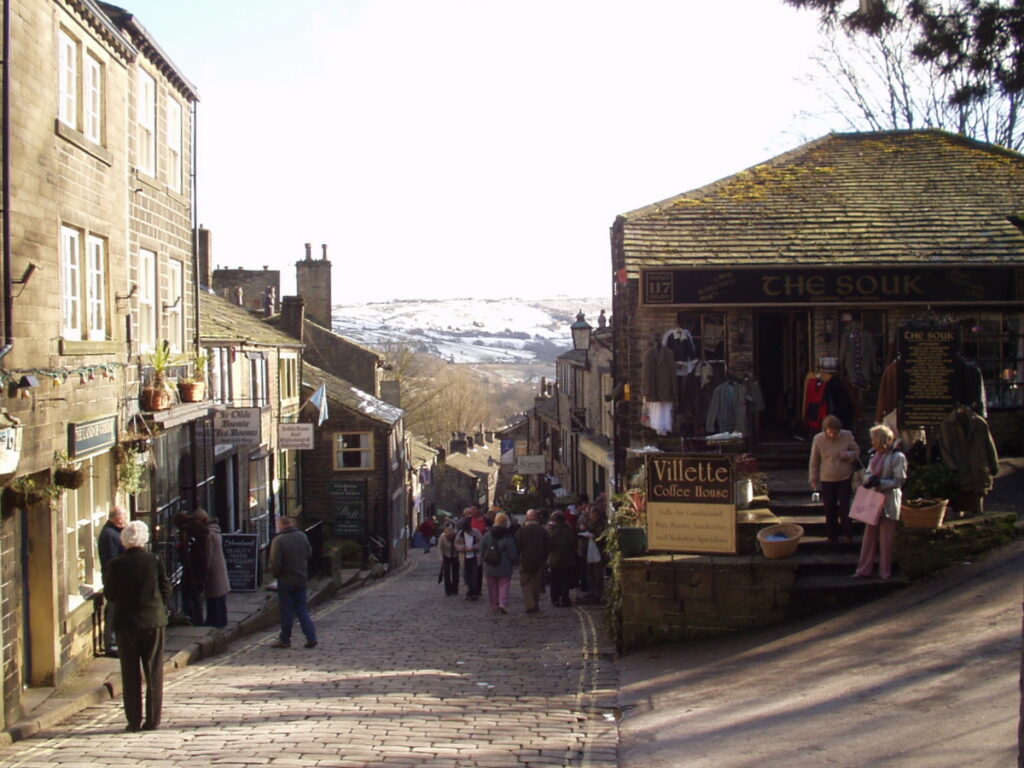
Brontë fans, stand up and be counted! This is your Nirvana, Brontë heaven. You can visit the Brontës’ home, have a drink in the pub which Branwell Brontë frequented and wander the streets where the family lived their daily lives. A short distance away, you can do your Cathy and Heathcliff bit on the famous moors where Charlotte, Emily and Anne spent so much time, and which inspired their novels, in particular Wuthering Heights.
Visiting Haworth
Haworth can easily be reached by car, and there are various car parks and street parking
The Keighley and Worth Valley Railway runs during the season from Keighley station to Haworth and beyond to Oxenhope, so it is possible to get there by train from Leeds or Bradford and enjoy a ride on a steam train as well. (Keighley station was built in 1846 and the railway extended to Haworth after the Brontës’ time, but Charlotte and Anne did go by train from Keighley to London in 1848). There are also buses from Keighley to Haworth, a journey of around 4 miles.
The “must see” places in Haworth are of course the Brontë Parsonage Museum, and if you’re a bit of a walker, the moors. The church where most of the family (apart from Anne, who died and was buried in Scarborough, on the Yorkshire coast) are buried is also well worth a visit, but only part of the tower dates from the Brontës’ time.
History
The Brontë Parsonage Museum
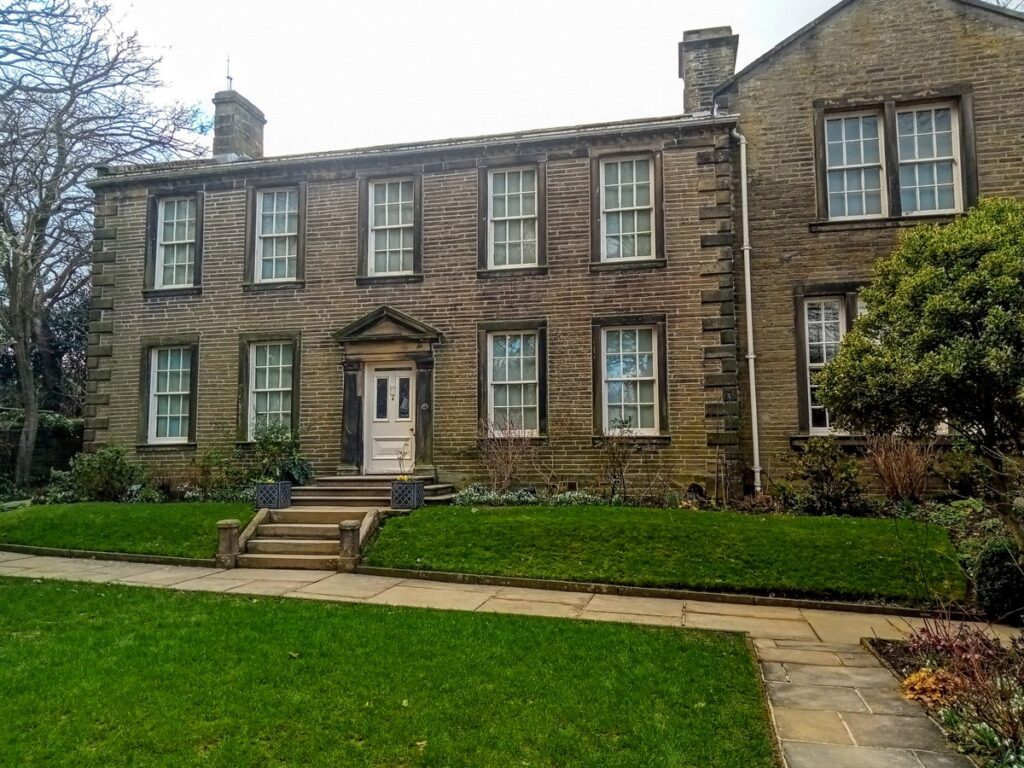
This unpretentious Georgian house is a mecca for Brontë fans. Walk up the old lane by the side of the church and the graveyard, passing the old sexton’s house and the attached Sunday school building which Patrick campaigned for on your right. This lane is very little altered, and, especially on a darkening winter’s afternoon, you can imagine yourself there 200 years ago, maybe greeting Branwell on his way to the Black Bull inn.
If you ignore the additional wing on the right, built by Patrick’s successor, Rev Wade, you can picture the original, symmetrical Georgian stone house as the family knew it. It was built in 1778 by the then incumbent, Revd John Richardson and was originally named “Glebe House”
The back is completely changed, thanks to Revd Wade (!) but there is enough left of the kitchen to be able to put yourself into the Brontës’ shoes and imagine it as it was. The view of the graveyard is somewhat grim (and it is reputed to contain over 40,000 bodies!), but you can’t help feeling that it was influential in their writings, and perhaps a constant reminder that life is fleeting. Patrick, their father, had a fear of fire and while they were growing up, there were no carpets or curtains to provide warmth and some degree of insulation from the stone flagged floors. (This changed eventually as Charlotte managed to persuade him to accept a few more comforts.) If you can visit when it’s not busy, you can stand in the stone flagged entrance hall and imagine the family are there with you. The dining room and Patrick’s study are pretty much as they were in the Brontës’ time, although the kitchen has been much altered. You can see the original table and sofa in the dining room (below): the sisters used to write here, read pieces out to each other, and walk round the table arm in arm chatting. The pink wrapper on the left was part of a special exhibition of some of Charlotte’s clothes and would have been worn by her inside the house.
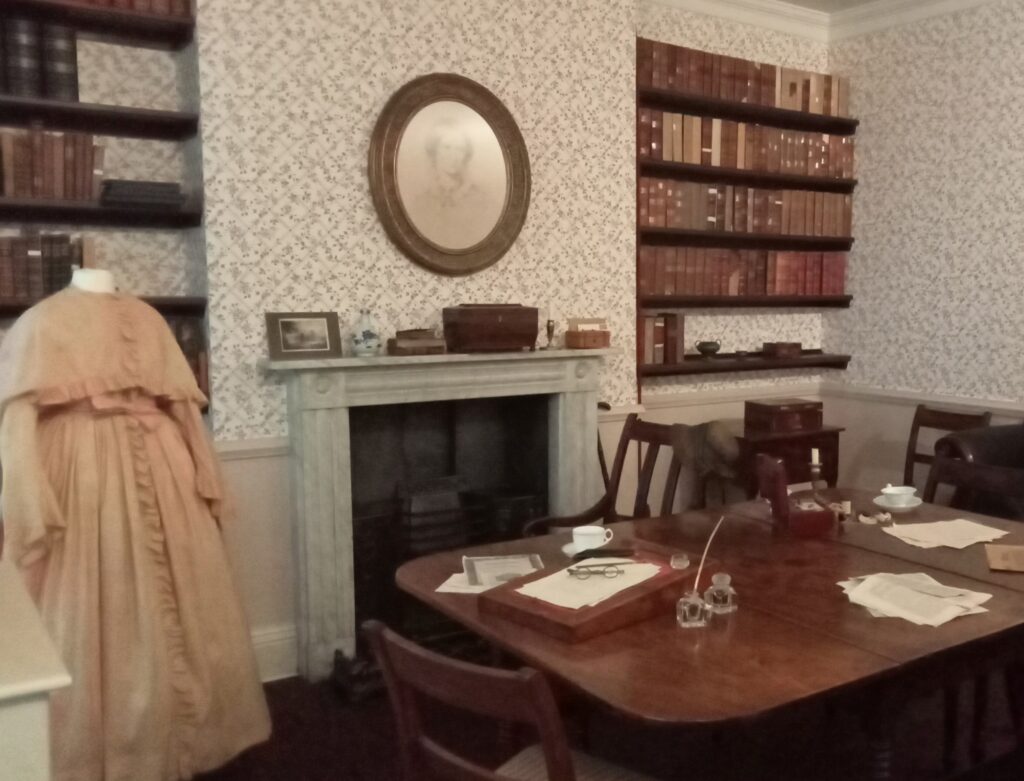
On the other side of the entrance passage is the room Patrick used as his study (below). It also contains the original piano used by Emily and Anne. Poignantly, some of Patrick’s own possessions are displayed in his study, almost as if he has just popped out to visit a parishioner or attend a meeting, and will be back shortly.
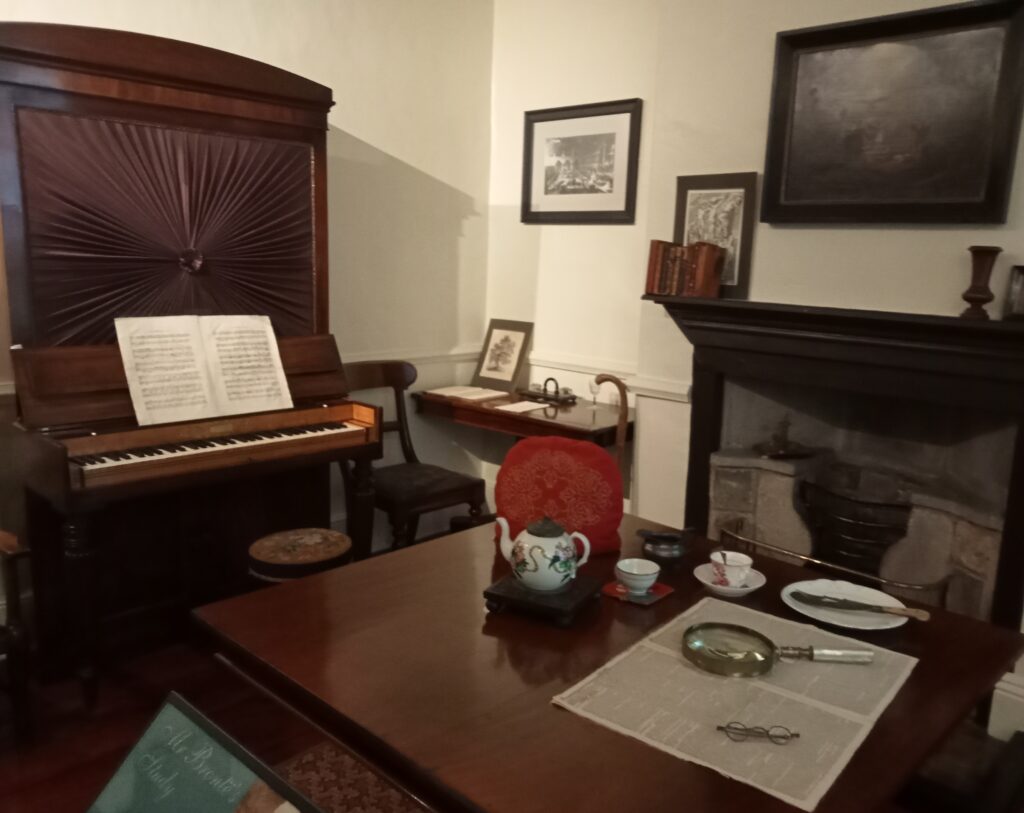
On the stairs you can see the original grandfather clock which Patrick would wind every evening as he went to bed around 9pm,and although upstairs has been somewhat altered, you can still get a feel for how it was.
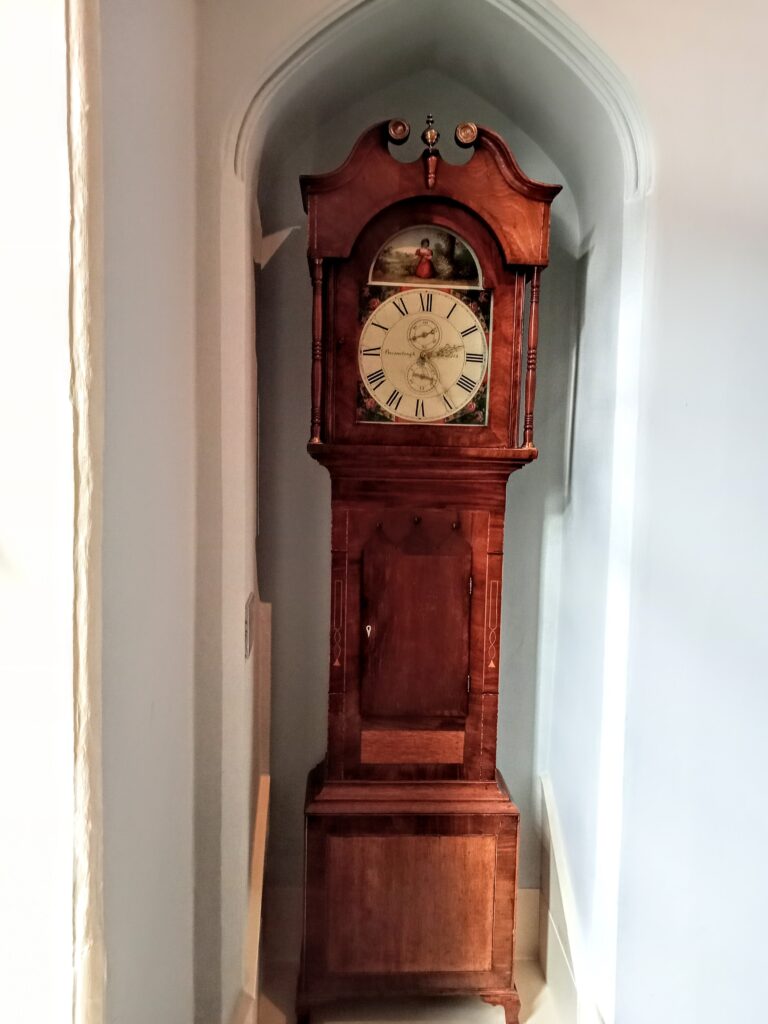
The tiny room over the hall, the “children’s study” as the family servants called it, is the hub of their childhood writings and imaginings. On the plaster of the wall, pencil drawings believed to be done by the Brontë children are preserved, an awesome testament to their inner world. It used to be large enough to have a bed alongside the window as we can see in one of Emily’s sketches of herself – the room became hers when she grew up- but the newly affluent Charlotte did some alterations after her sisters’ deaths and took some of that room into hers to extend it. Her room is now used for exhibiting items to do with the family, although Patrick’s room, like Emily’s, is set up in authentic fashion.
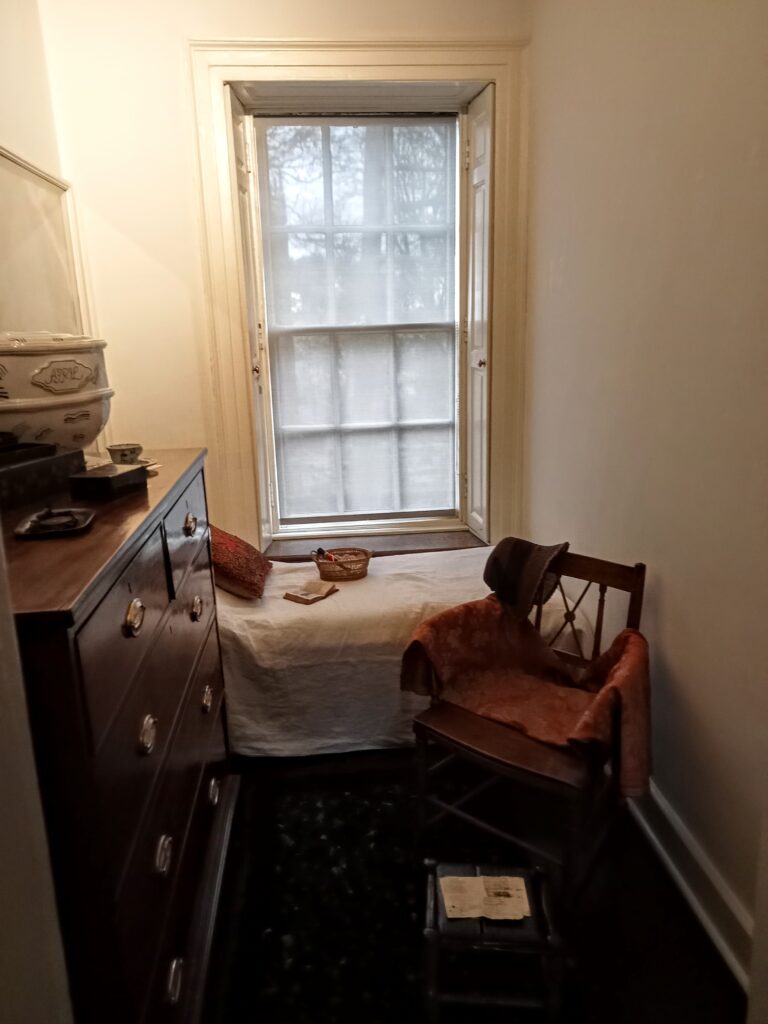
The Parsonage holds various exhibitions and events which change with time. The link to the website of the Brontë Society, who run the museum, is here:
Haworth Church
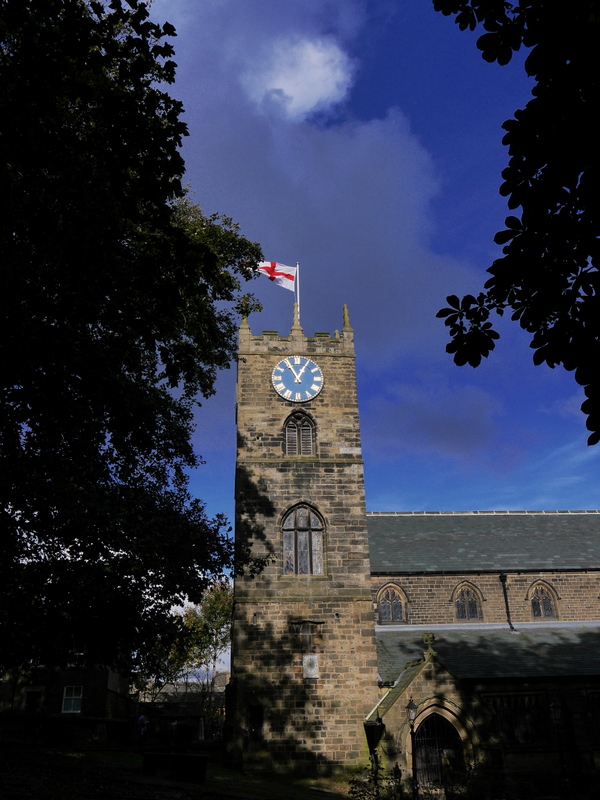
Photo by John Skilleter
Well worth a visit while you’re in Haworth, although apart from the lower part of the tower, it is not the original one where the Brontës worshipped. The Revd John Wade, who followed Patrick Brontë as incumbent, took advantage of an offer of funding and had the rest of the church rebuilt. However you can see memorials to the family inside the church and the tablet detailing where the family vault is.
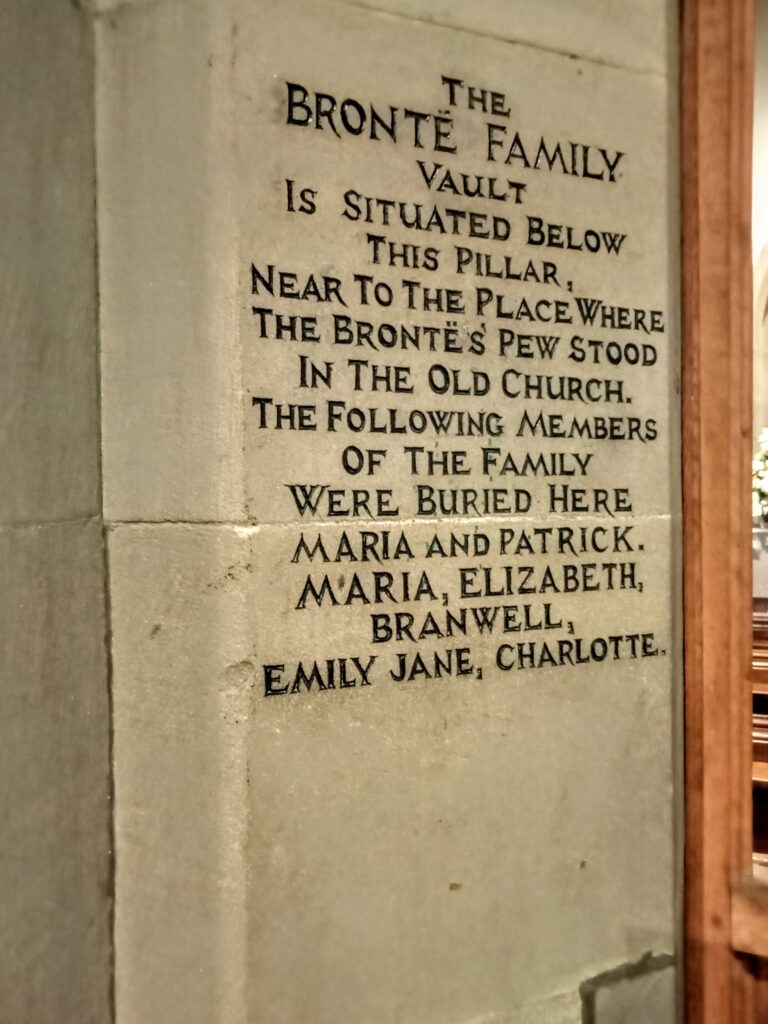
Records show some kind of chapel on the current site from the 14th century, and the Brontës’ church was built in 1488. Patrick Brontë’s successor, the Revd John Wade, oversaw the demolition and rebuilding of most of the church in 1879. This caused an outcry as it was perceived as the desecration of a major part of the Brontë story, but since it was pronounced unsafe, and contaminated water from the graveyard was seeping up through the church floor, there was no way to preserve the original church. Apart from the lower part of the tower, which has been extended upward on two occasions, the current church all dates from this time. If you look closely at the side of the tower facing the Parsonage, you may spot bullet holes. These are said to have been made by Patrick’s flintlock pistol: having worked close to the Luddite riots, he kept a loaded pistol by him at night for protection, but sensibly fired it in the morning as a live firearm was not safe lying about!
The Brontë Chapel was consecrated in 1964 in tribute to the family. It contains the communion table, chandelier and Brontë memorial tablet from the old church, and set into the floor is a plaque marking the vault where the family are buried. The church is an active community as well as a historic building.
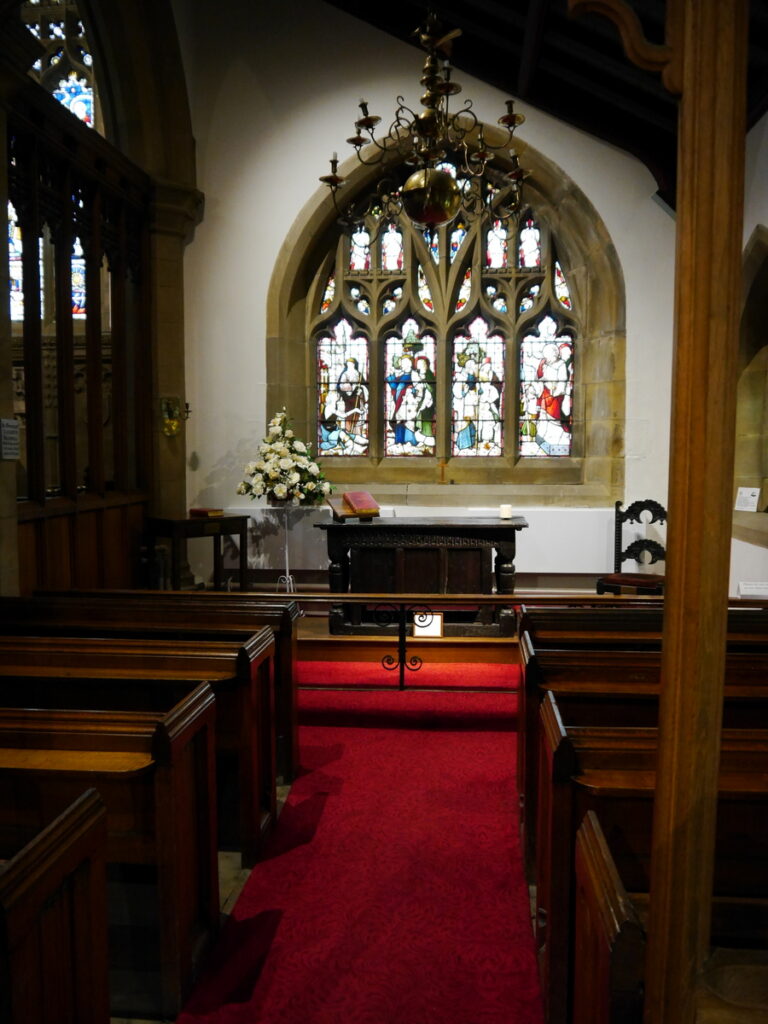
The Old Schoolroom
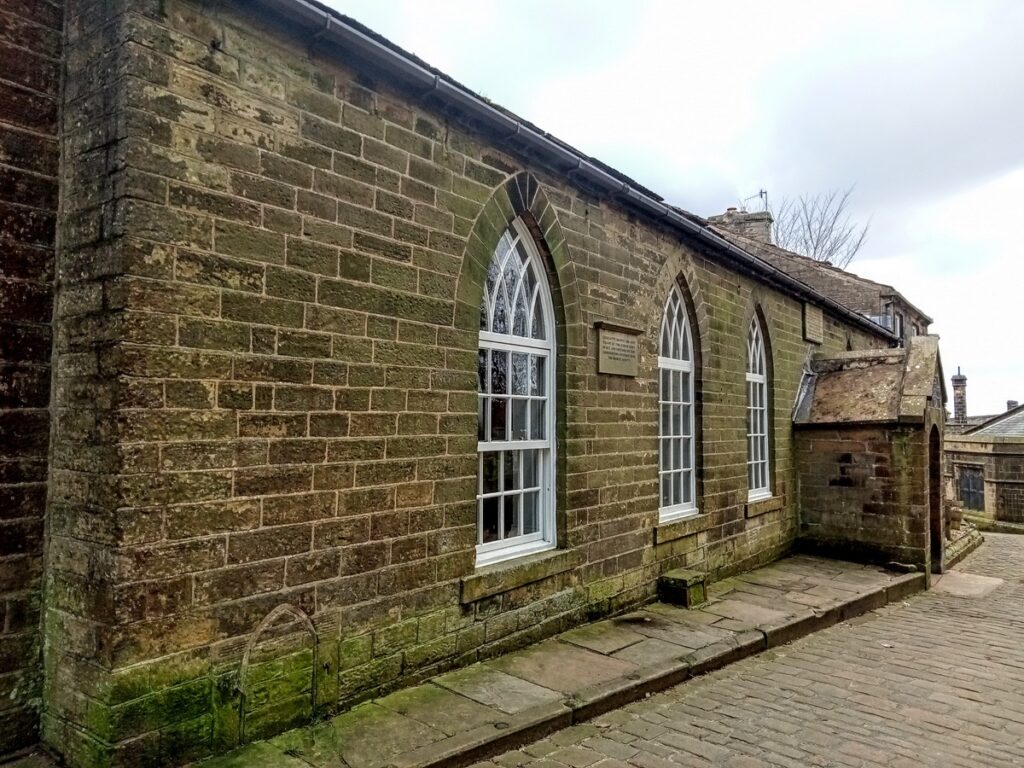
Patrick Brontë, perhaps because of his own humble beginnings and the help he obtained to become a clergyman, was a passionate supporter of education and assistance for the poor. He campaigned and fundraised for a National Sunday School for Haworth, persuaded the church trustees to grant the land, and the school was opened in 1832. The dedication plaque over the door was composed by Patrick and includes the very apt quotation from the Book of Proverbs:
‘Train up a child in the way he should go; and when he is old, he will not depart from it’.
Patrick was successful in obtaining further funding in 1843 for a schoolmaster and furniture to enable the school to open on weekdays too: a real benefit for the children of Haworth.
The schoolroom can be seen if you walk up Church Lane towards the Parsonage with the churchyard on your left. The building is to your right. The upper end, with two gables, represents two further extensions to the 1832 building. You can often look inside the schoolroom as it is now a popular venue for craft fairs, coffee mornings and other functions.
The Black Bull Inn
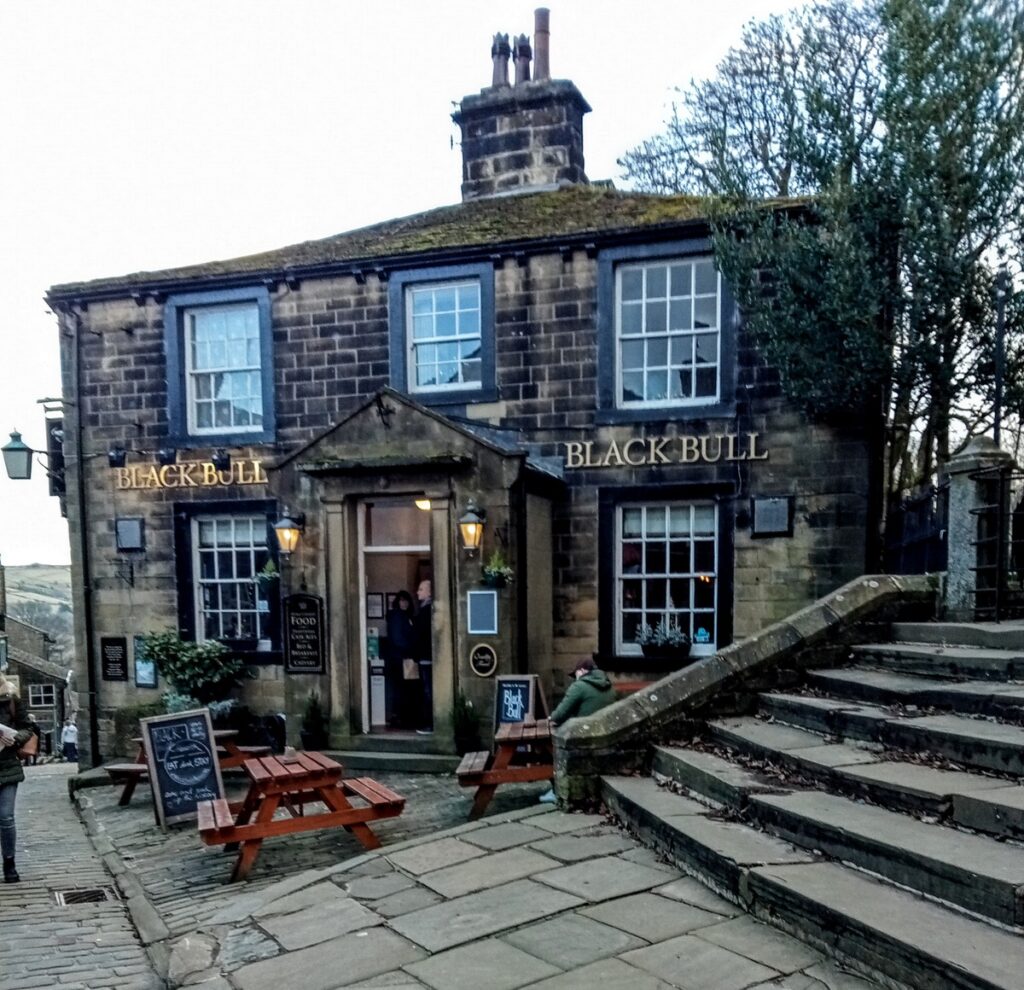
The Inn began life as a coaching inn, thought to date from the 16th century. Its history is a little sketchy but since it was later on the turnpike road between Keighley and Colne, it was likely to have been a busy, bustling establishment, with horses stabled there and passing travellers stopping for refreshment while the coaches changed their horses.
Its fame nowadays has to be as the popular haunt of Branwell, the only brother of the more famous sisters. The Masonic Lodge used to meet there during his lifetime and he was the secretary for some time. He is said to have had a favourite chair, in the Masonic style, which is still visible in the pub today, along with a bell which he apparently rang when he wanted another drink!
There are numerous stories of hauntings in the pub, including presumed sightings of Branwell, and the programme “Most Haunted” did an episode from there back in 2005. It is still a thriving inn and should you wish, you can visit for food, drink or overnight accommodation and see if you experience any supernatural happenings……
Haworth Station
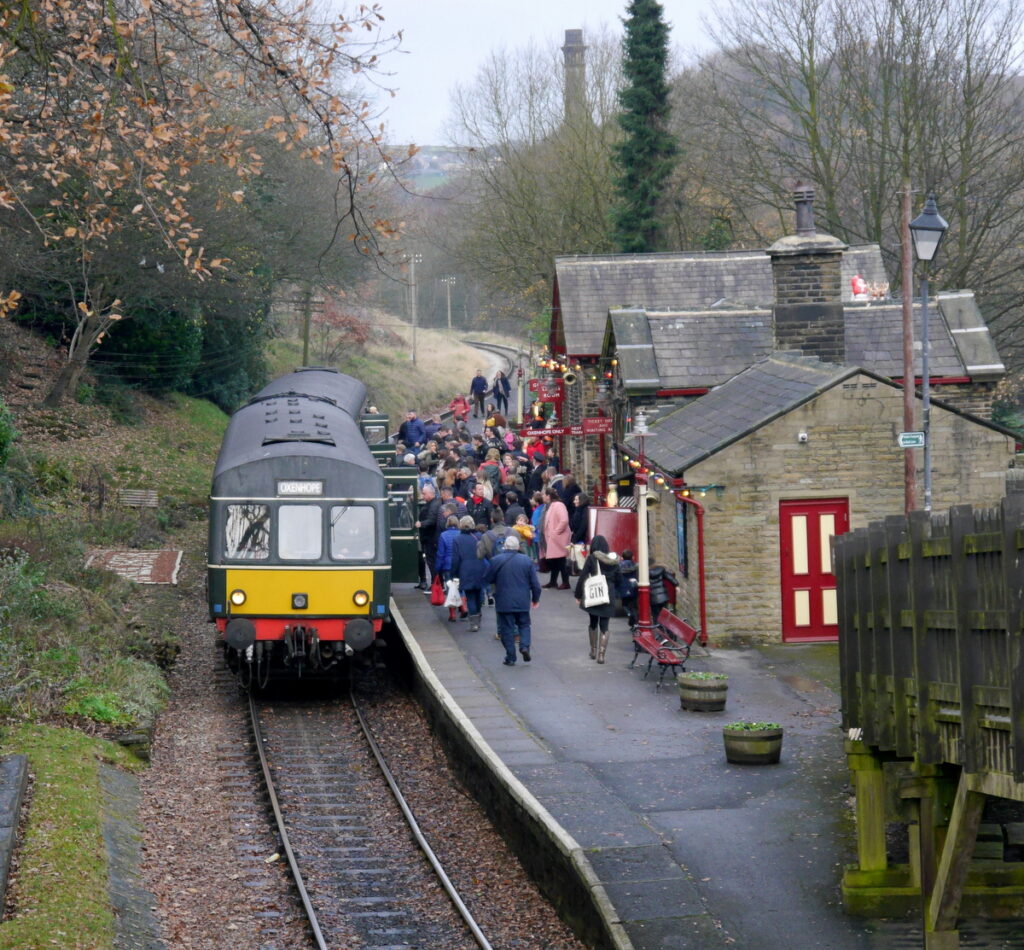
Although Haworth Station postdates the Brontë family (it opened in 1867 and Patrick, the last survivor of the family, died in 1861), it is still an interesting historical place to visit, with the added benefit of being able to ride the vintage steam and diesel trains. My family spent so many Saturdays doing this when our sons were young!
The line was closed in 1962 but thanks to a dedicated group of supporters it was rescued and reopened as a heritage line in 1968. It is part of the conservation area of Haworth, although there have been alterations to enlarge the original building.
In the time of the Brontës, the closest station was Keighley, about 4 miles away. They would have had to walk or take a horse-drawn cart to get there, but it is known that they made use of it. Anne and Charlotte went to visit their publisher in London, Charlotte and her friend Ellen Nussey went to Bridlington (then known as Burlington) where Charlotte first saw the sea, Branwell went to London, Emily and Anne had a trip to York… all by train. Other Brontë railway connections include Branwell’s time as a railway clerk at Sowerby Bridge and Luddendenfoot, near Halifax, and the sisters’ investment of some of their legacies from Aunt Branwell into the railways.
Walks around Haworth
You can still wander in the footsteps of the Brontës today, with much of the surrounding scenery still looking much as it did in their time. Due to injury, I haven’t been able to walk the moors for a while, but I will update this section when I can go again.
In the meantime, here is a link to the Bradford Council website with some good suggestions for walks in the area:
Haworth as a film/TV location
It won’t surprise anyone that around 75 productions have been filmed in and around Haworth. Besides the obvious Brontë and steam train themes, (The Railway Children being perhaps the most famous example of the latter), there are also such surprising names as Peaky Blinders, Hercule Poirot, The Great Train Robbery and Sherlock Holmes. The atmospheric, cobbled village streets, authentic weavers’ cottages and the Parsonage itself, not to mention the moors, provide exactly the period feel that many producers and directors are after.
You can find a full list of productions featuring Haworth at this link:
